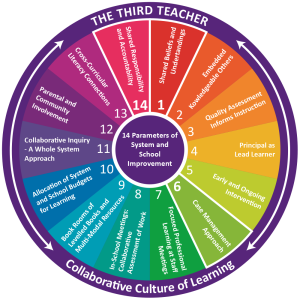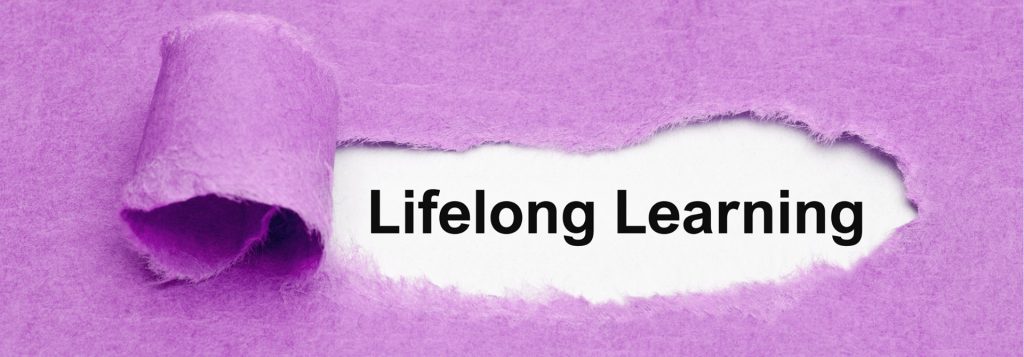
To Commit or Not Commit
Putting FACES on the Data: What Leaders and Teachers Do!

|
Dr. Lyn Sharratt |
10 January 2023
After a Professional Learning session this week, I worried about
- those leaders and teachers who didn’t come;
- those leaders and teachers who didn’t stay;
- those leaders and teachers who came only to “show the flag”, and then left.
I wondered when they committed to system and school improvement on behalf of all students, who set expectations, made demands for and monitored the attendance of school leaders and teachers with their school teams at PL sessions? I noticed again this week that the teams with few leaders and teachers present, or with the leaders and teachers who left, were left floundering.
I worried again this week about those people at every organizational level who apparently don’t take responsibility and accountability for the downward trajectory of the results in their Systems. Consciously or unconsciously opted out? The work of system and school improvement is too hard to have anyone missing-in- action. They do not know the FACES of their learners. They are definitely not worrying about them like I am and have been. Years of improvement work done in some jurisdictions has made no or little difference. Worse yet, many schools - thus hundreds of students are going backwards in their systems.
I worried that many leaders really don’t know how much effort and commitment it takes to turn around a system/school in trouble. No first-order changes are good enough – you know, the technical ones like: paint the buildings, put in new furniture, change the role descriptions and position titles, buy new technology, restructure, etc. It takes the energy and commitment to move to second-order change to succeed. That is, those changes that demand proven, high-impact classroom practices that increase student achievement and that empower strategic leadership. In other words, knowing the details of system and school improvement, implementing them and monitoring the evidence of improvement.
I worry about those systems. It is especially perplexing to me that the neighbouring jurisdiction, with the same kids, from the same neighbourhoods, is working with me on a structured, systematic plan for improvement, implementing the 14 Parameters (Sharratt & Fullan, 2009, 2013) courageously, diligently and deeply - and their results are soaring in the same amount of time.

What IS the answer? It’s not that easy, the answer inconveniently is both simple and complex (‘simplexity’). It involves knowing and paying close attention to the execution of every nuance of the 14 Parameters of system and school improvement. The 14 work together, in concert, with the impact focusing concern on increasing all students’ growth and achievement and are briefly described, as follows:
-
Shared Beliefs and Understandings
- All students can achieve high standards given the right time and the right support.
- All teachers can teach to high standards given the right assistance.
- High expectations and early and ongoing intervention are essential.
- Leaders, teachers and students need to be able to articulate why they do what they do and why they lead, teach, learn the way they do. (Adapted from Hill & Crevola, 1999).
Parameter #1 is number 1 for a reason. Like any dimension of shared beliefs, it is the most difficult to embed and must be revisited at every opportunity with encouragement and evidence it is working! Systems, schools and teachers must be driven by a deep belief that every student is capable of growth. They must have high expectations of growth and achievement for all students and teachers. When this begins to occur, there is a strong collegial culture of mutual trust and support that develops among teachers and system and school leaders.
-
Embedded Knowledgeable Others
- An expert teaching team is necessary. Leaders and teachers who Velcro themselves beside a Knowledgeable Other (KO) have a ‘leg-up’. Every school must have at least one master teacher, one who is both respected and respectful, and who has time during the school day to work alongside teachers in classrooms as co-teachers.
- Teachers make a difference when they share their ‘craft knowledge’ authentically and openly and take an active leadership role beyond the classroom. For example, each school needs to identify a learning leader with expertise in Literacy, Numeracy and Critical Thinking to support the Principal’s instructional leadership of learning with a focus to maximise progress for each learner.
-
Large Blocks of Time Focused on Assessment and Instruction
- Evidence-proven, high-impact teaching practices are embedded, practices to which assessment for and as learning are aligned. In their day-to-day teaching, classroom teachers place a high priority on identifying and addressing the learning needs of individual students. They use assessment data to inform their instruction – the very next day (or minute) as ‘data today is instruction tomorrow’.
- Teachers closely monitor the progress of individuals, identify learning difficulties and tailor instruction using the gradual releaser/acceptance of responsibility, to address levels of readiness and need. They know the ‘instructional starting points’ for each learner.
- School leaders recognise and deeply understand that highly impactful teaching practices are the key to improving student learning throughout the school. They take a strong leadership role, clearly outlining and expecting the use of evidence-proven teaching practices in all classrooms to ensure that every student is challenged, empowered and learning - one year’s growth for one year at school, beginning in the Early Years.
-
Leaders are Present and Participating
- School leadership teams have established and are driving strong improvement agendas for schools, grounded in data and evidence from research and practice, with clear, measurable student outcomes. Explicit school-wide targets for improvement with accompanying timelines, have been set and communicated.
- System and school leaders show up to and stay during Professional Learning sessions, working alongside teachers, always modelling and monitoring learner progress, building teacher capacity in the effective and expected practices.
-
Early and Ongoing Intervention
- Intervention is not a purchased program – it is an approach. There are no pre-packaged solutions to system and school improvement. Intervention is most effective when it is narrow and sharply focused such as when it is directed toward early learners; however, it must also be ongoing. To begin, leaders must ask: What is happening in Kindergarten? Learning to read, write and think critically begins early as successful learners in the Early Years predict high school graduation. Secondary school leaders and teachers must care about and know what is happening in ‘feeder schools’ and know how to intervene when required.
- Data are used to identify each learner’s strengths and areas of need; to make collaborative decisions about how to move each learner forward; and to identify staff Professional Learning requirements.
- All teachers know how to assess and differentiate instruction for all students. All teachers are intervention teachers. Professional Learning across the system and schools embraces this vision.
-
Case Management Approach
Putting FACES on the Data using the Case Management Approach is two-pronged:
1. Data Walls and
2. Case Management Meetings (CMMs):
- Data Walls visually represent data about learners that assist staff to identify learning patterns at different levels and to plan effectively for each learner. They are in private spaces available only to teachers and to school and system leaders. Through the use of Data Walls, teachers develop a collective responsibility for all learners and assess each learner’s progress widely. Rich conversations are a powerful outcome of the co-construction of Data Walls.
- Case Management Meetings (CMMs) use data to identify each learner’s needs. Planning, teaching response and monitoring are applied to ensure learner progression. Teachers bring students to the CMMs via through a student work sample. There are two ways that a student comes to this problem-solving table: 1. Recognition after a Data Wall discussion that more needs to be known about a particular student’s achievement or progress; and 2. Teachers self-nominate to bring a student to the CMM to receive support in progressing the student’s learning. Instruction is always the focus of this 15-20 minute ‘short, sharp and shiny’ meeting. Every data-informed request by a teacher for assistance and support is acted upon because we all believe that every student can learn… and that every teacher can teach … What is a necessary instructional strategy for this student is often good for others.
- Case Management Meeting support is as important for regional leaders whose school data wall shows under-performance as it they are for school leaders and teachers. Successful systems have intentional school Data Wall meetings and from those discussion have idea-rich CMM for supporting school change alongside regional leaders.
-
Embedded Professional Learning at Staff Meetings
- Professional Learning is required to build teacher and leader capacity in the planning and teaching of literacy, numeracy and critical thinking across all learning areas. Given the right time and support, every teacher in every classroom and every leader in every school must have the knowledge, understanding, skills and dispositions to move each learner forward. Resourcing Knowledgeable Others (KOs) in each school, with partial release time, supports this notion. The KOs and Leaders together provide the PL needed at staff meeting – putting operational issues on memos to staff.
-
In-School Grade/Subject Meetings to Collaboratively Assess Student Work
- Regular and ongoing teaching team conversations occur, using anonymous student work samples that focus on the learner when presented as evidence. Collaborative Assessment of Student Work (CASW), considering student work as data, demands collaborative planning. To ensure that operating norms and protocols are used to guide the facilitation needed to collaboratively assess pieces of student work (Sharratt & Planche, Leading Collaborative Learning, Corwin, 2016), powerful learning for all those present results. Beyond the typical moderation to achieve sameness in assigning a grade, the CASW forum also discusses two key questions: 1. What does this piece of student work tell us about the changes needed in our practice? 2. What Descriptive Feedback will this student receive?
- The learning begins when grade/year-level groups of teachers and leaders work together to gain an understanding not only of the levels of the work but also the next level of instruction needed to move the student. Teachers and leaders around the table complete the process by giving sample Descriptive Feedback (2 positives and 1 ‘pusher’, for example) for the teacher and for the student.
- The learning becomes more powerful when teachers and leaders across year-levels are engaged together in CASW.
-
Multi-Modal and Multi-Leveled Resources
- Systems apply their resources (staff time, expertise, funds, facilities, materials) in a targeted manner to meet the learning needs of all students. They have school-wide policies, practices and programs in place to assist in identifying and addressing student needs. Flexible structures and processes enable schools to be nimble enough to respond appropriately, with ‘just-in-time’, ‘just-right’ instruction and resources to meet the needs of individual learners.
- Resources should be of high quality, reflect the learners in the schools and be easily accessible at place and time of need to support teacher implementation of the curriculum expectations. Processes should be established for regular auditing and culling of out-dated, biased resources.
-
Allocation of District and School Budgets for Literacy Learning and Resources
- Equity of outcomes for all learners is ensured through the resourcing (human and material) to support learning in literacy, numeracy and critical thinking.
- Data-determined urgent needs schools receive central and local discretionary resources that are nimbly moved to prevent otherwise catastrophically poor results
-
Collaborative Inquiry is Focused on Students’ FACES
- Principals and teachers use a Collaborative Inquiry Learning Cycle (Putting FACES on the Data: What Great Leaders and Teachers Do! Sharratt and Fullan, Corwin, 2022) to model and share the exploration of data for knowledge building to sustain all students’ improvement.
- CI is a whole system and school approach involving the use of data to inform the SMART goal which is then turned into a CI question.
-
Parental Involvement
- The system and school plan for continuous improvement is shared with parents and caregivers. Parents and the broader community are seen as partners, sitting at the decision-making tables together, focused on learning for all students.
- Collaborative relationships are formed to develop strong communication among parents, members of the community and staff to identify, support and extend learning by reaching out and inviting parents and the broader community in to work alongside educators.
-
Cross-Curricular Literacy Connections
- System and school improvement requires a focus on literacy and numeracy interwoven with critical thinking, throughout all learning areas. Gradual Release/Acceptance of Responsibility strategies are used to scaffold literacy learning/critical thinking in all curriculum areas.
-
Shared Responsibility and Accountability
- The book-end to creating the visionary statements “all students can learn… all teachers can teach… if …
- We all own all the FACES. And, we are all responsible for every learner within and across our schools. Everyone knows and can articulate system, school and classroom priorities that been aligned, are clear, precise and intentional.
- Strong procedures are in place to encourage a school-wide, shared responsibility for student learning and success, and to encourage the development of a culture of continuous professional improvement that includes classroom-based learning, mentoring and coaching arrangements.
- How do you know all students are learning? Learning Walks and Talks conducted daily in every school is an effective way to collect data to answer this question. There must be 5 minutes in every day for leaders and teachers to walk, at least in pairs, looking for evidence of students’ learning and of teachers’ capacity-building in using high-impact strategies.
- Leaders and teachers are consistent, persistent and insistent about ensuring quality teaching and learning in every classroom enabling their accountability for and their acceptance of the responsibility for the progress of every FACE.
We know and have demonstrated that it is possible to make real progress and raise performance and achievement using the 14 Parameters as a lens over improvement. “Where educational systems have developed their collective capacity and worked collaboratively, the achievement of students has increased more than in schools that have worked individually” (Sharratt & Fullan, 2009, 2012, 2022). How can we not choose to commit to an improvement plan that works?
Putting ‘FACES on the Data’ with CLARITY is our ‘Forever Work’!
